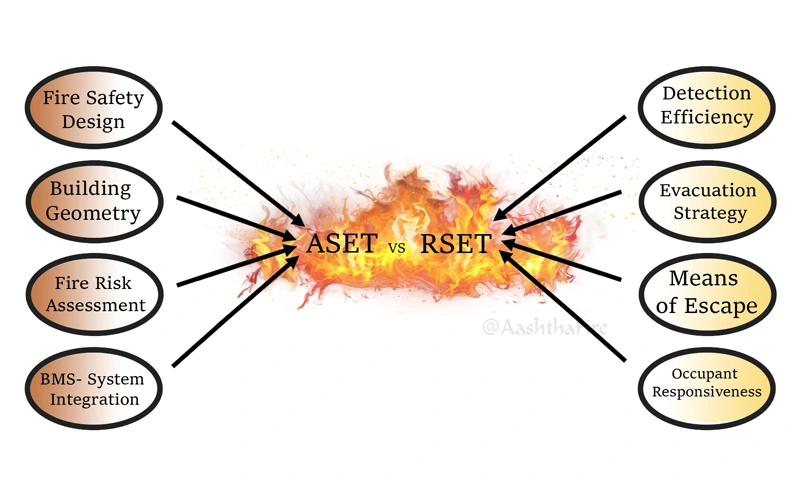MEANS OF ESCAPE
The term “means of escape” is a structural feature of a premise that is entitled to provide a safe route for the occupants to travel along to a place of safety in the event of a fire. This route should be accessible, well lit and adequately signed at all times, being a legal requirement under the National Building Code (NBC).
Why is “means of escape” important?
Means of escape is extremely important to ensure that the Available Safe Egress Time (ASET) is more than the Required Safe Egress Time (RSET). In essence, this means that all the occupants, either unaided or with assistance of staff, should be able to reach a place of ultimate safety, or if not, at least to a place of reasonable safety, before any life threatening situation arises in the event of a fire.
Factors to Consider While Designing Means of Escape
- RSET should not exceed ASET
- Number of occupants for determining the number and width of escape routes
- Dead-end conditions of the floor layout
- Consideration for sleeping or disabled occupants
- Travel distances
- Types of Fire Detection and Protection systems
- Evacuation strategies

The “means of escape” must have a fire resisting rating of at least 30 minutes to ensure safe evacuation of the occupants to the nearest place of safety.